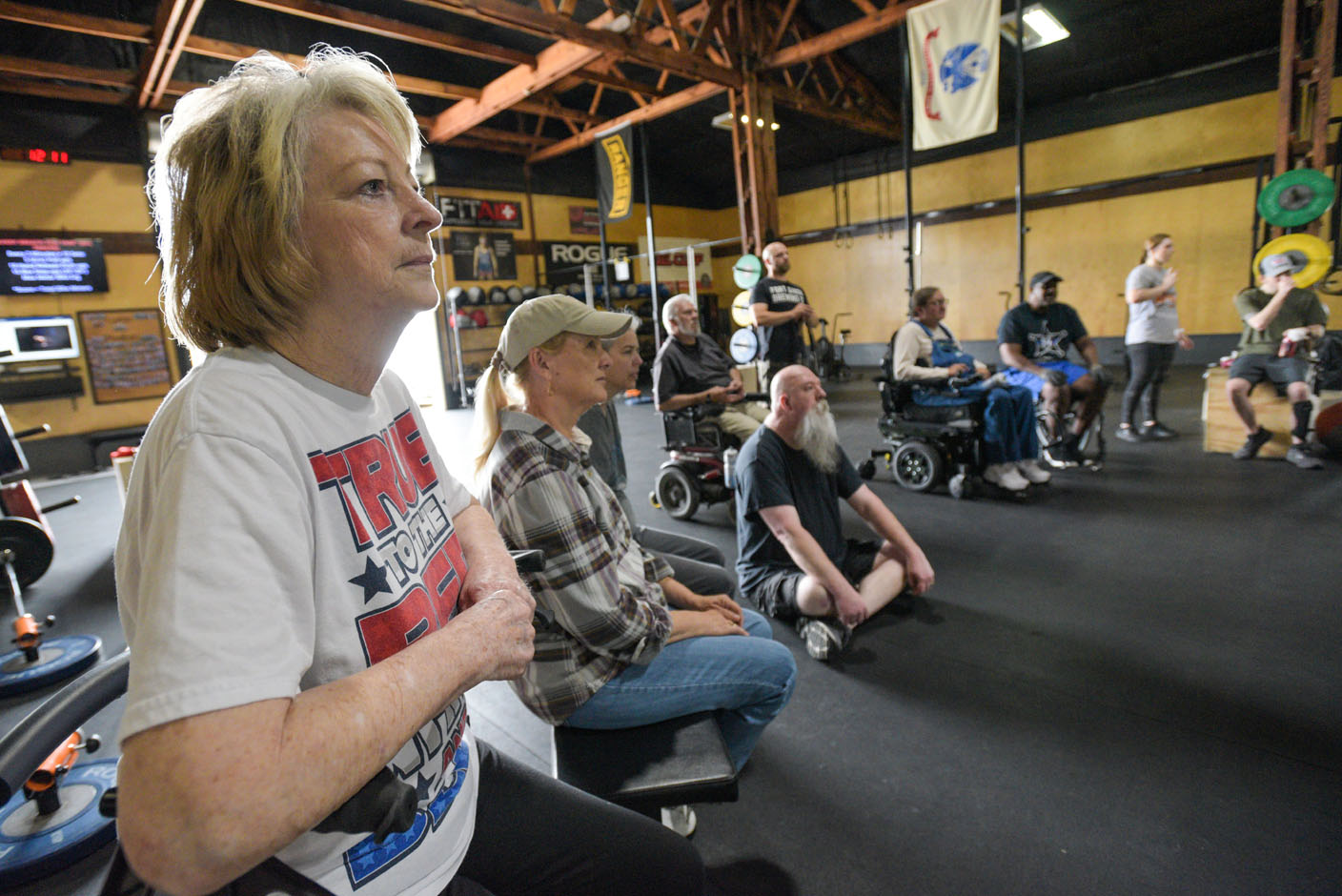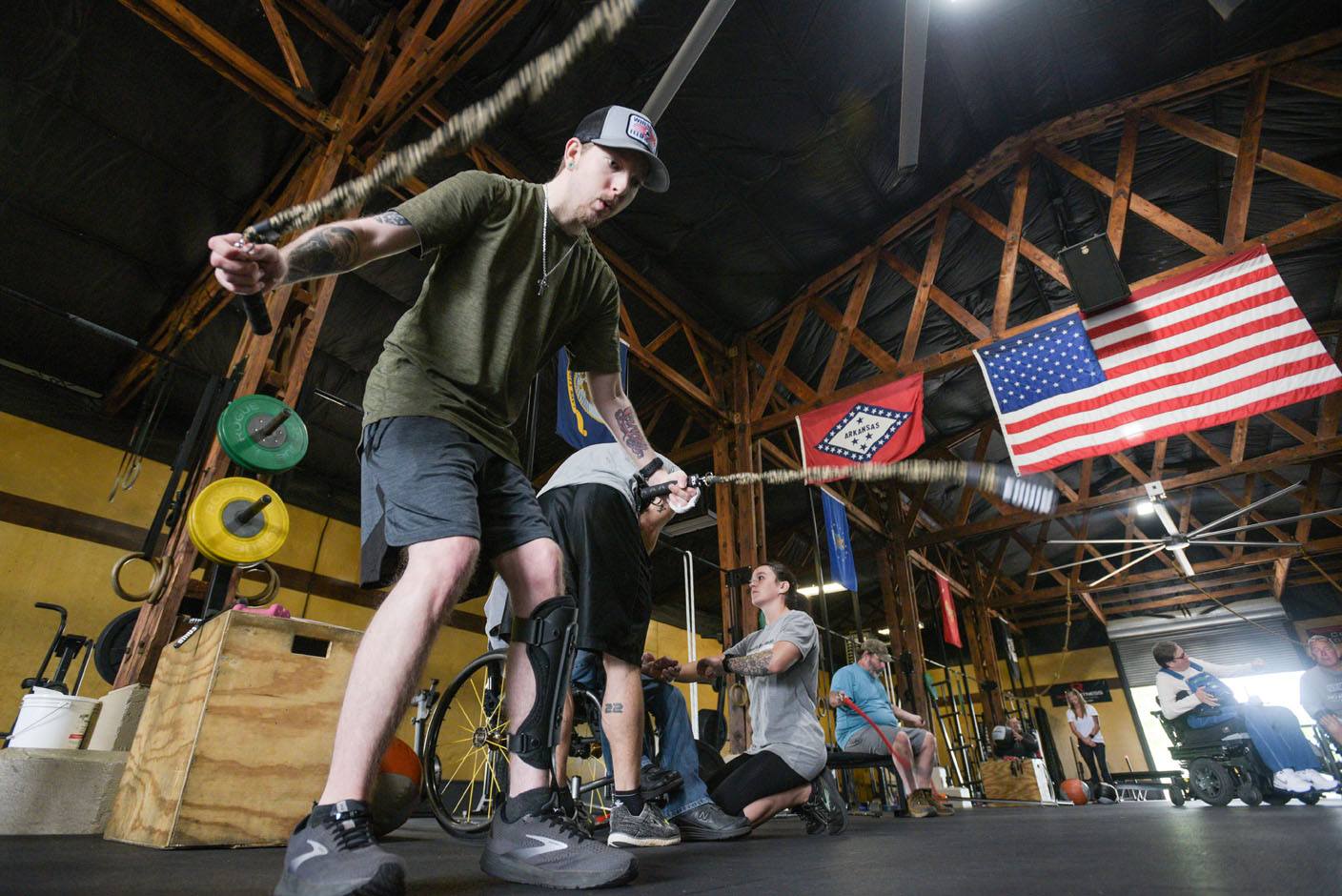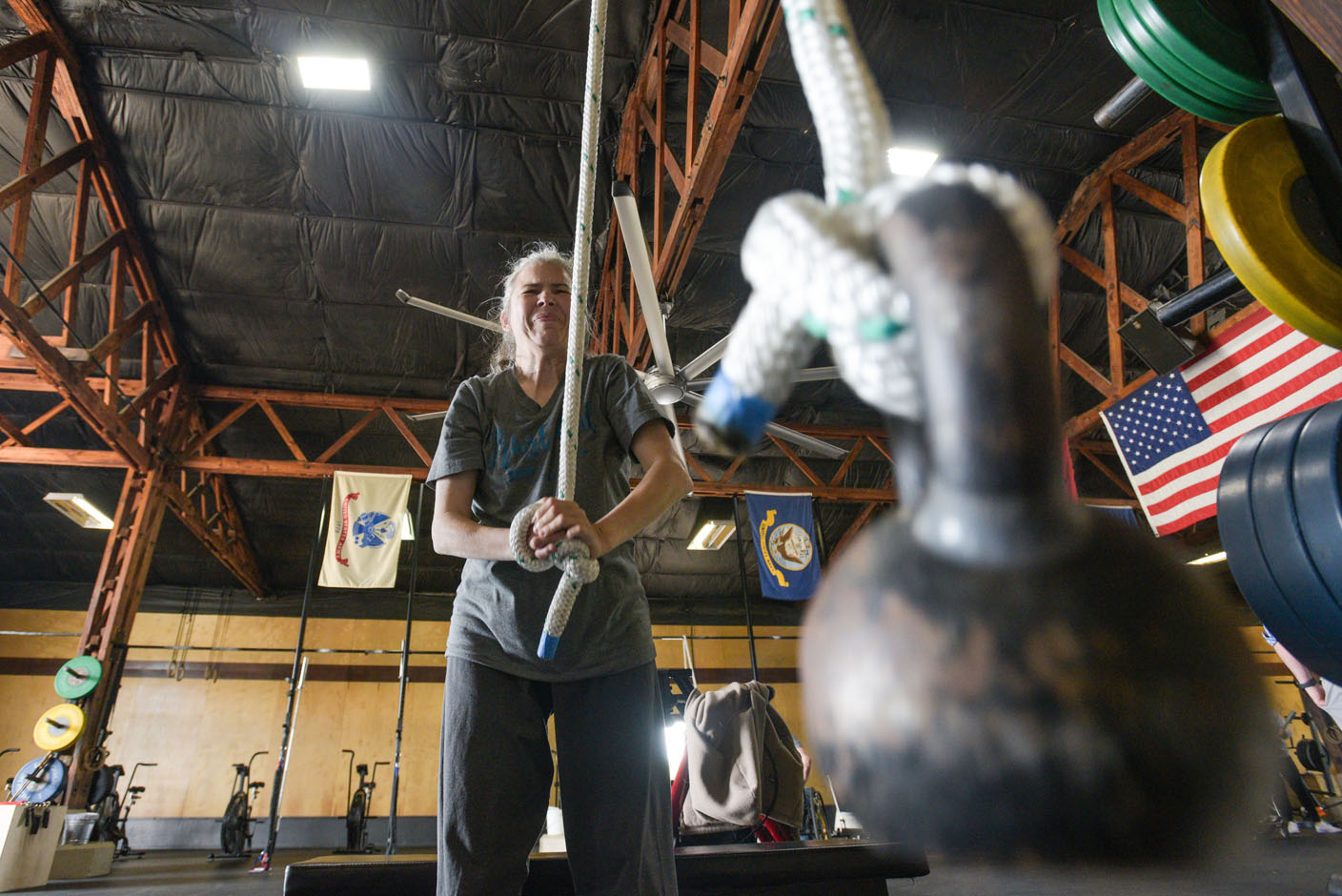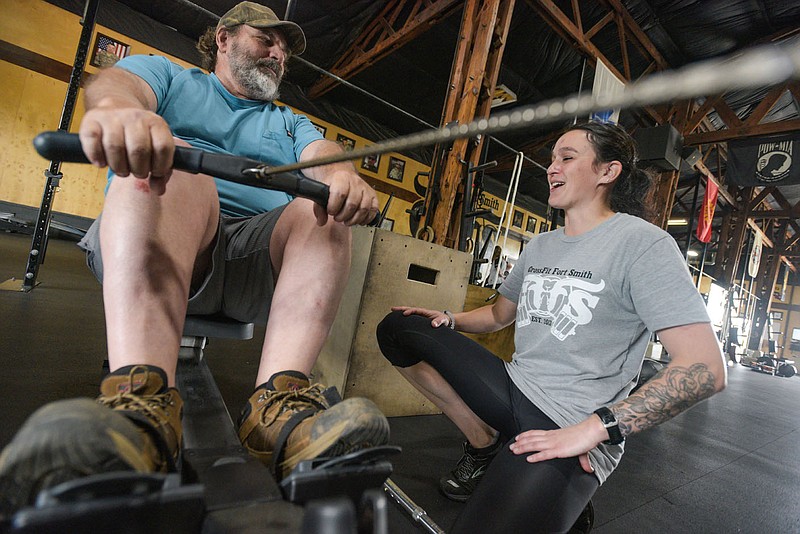FORT SMITH -- A married couple in the River Valley is seeking to create healthier lives for people with physical disabilities.
Drs. Reed and Kaci Handlery are assistant professors at the Arkansas Colleges of Health Education's School of Physical Therapy who started working at the institution in January 2021. They are doing a research project to determine the best way to promote long-term adherence to regular exercise, as well as reduce barriers to exercise, for people with spinal cord injuries that could be implemented elsewhere.
"Our goal would be, obviously, start local, where we're at, and then maybe, year two or later on, we expand up in Northwest Arkansas," Reed Handlery said. "Arkansas needs a lot of help in general, so we'd start there and then go from there."
Handlery said while exercise has proven to be beneficial to one's health, there's difficulty in getting people to continue exercising in the long-term. One of the ways in which the project investigates how to promote sustained participation in exercise is through a group-based format, as opposed to the one-on-one format typically seen in physical therapy.
"Hopefully, that social support and being around people with shared experiences promotes adherence to basically come to class and exercise long-term," Handlery said.
Kaci Handlery said cardiovascular disease is one of the leading causes of further impairment later in life for people with spinal cord injuries. One of the project's main objectives is to reduce the impact or risk of this disease, particularly with this group of people, something exercise can help facilitate.
She said people with spinal cord injuries often have barriers to exercise. This includes learning how to move areas of their body affected by their injury and finding both exercises that work for them and gyms they can access, as well as financial costs.
One of the participants in the project is Charleston resident Chase Molton. Molton, who uses a cane to get around, said the incomplete spinal cord injury he suffered from a vehicle wreck in 2020 led to weakness in all his limbs, with one side of his body being affected more than the other.
Molton said it's rare someone in a city as small as Charleston, which had a population of 2,588 as of April 1, 2020, per the U.S. Census Bureau, has a spinal cord injury like him. In addition, the gyms in the area aren't set up for the adaptive exercises better suited for him. He noted being part of a group with other people who are going through an experience similar to his is different from just trying to do it all by himself.
"Basically, the way I saw it was the quicker you get moving and stuff, then the better your chances are at kind of getting a little bit of your independence back," Molton said of exercise. "I mean, it's pretty easy to just say you don't want to do it and just lay around and not do anything, but it makes life a lot harder, especially when you can't really move anyway."
Molton said he found out about the Handlerys' study through one of his occupational therapists and has participated in it since it began.
Kaci Handlery said the study provides the participants two exercise classes a week at CrossFit Fort Smith, a gym close to the Arkansas Colleges of Health Education campus, at no cost to them. These are held from 11 a.m. to 12:15 p.m. Tuesday and Thursday, with participants invited to bring a partner who can participate as well.
Reed Handlery said the classes start with a warm-up followed by a "workout of the day" of varying CrossFit-related exercises, which is written down, and a cool-down. The participants all partake in very similar exercises during the workout, although these are adapted to suit their individual capabilities and preferences.
"A lot of our participants utilize wheelchairs for mobility, so we have to think of exercises that we can adapt for people who are able to use a wheelchair all the way up for people who are able to walk," Kaci Handlery said. "So we try and incorporate a push and a pull for use of the upper extremities. We try and target the core and the ab musculature as well to help strengthen the trunk."
The participants are polled on the intensity of the workouts at the end of each class to help determine whether they're being sufficiently challenged, according to Reed Handlery.
In addition, prior to the study, participants were sent home with monitors tracking their physical activity over the course of a week, a practice that will continue at various points throughout the study. Other qualities gauged during this time include participants' strength, cardiovascular endurance, quality of life and social support.
The Handlerys said Tuesday the research project had been going on for five weeks and had 16 participants enrolled at that point. The current segment of the study will last 12 weeks, with the pair to take July off before launching into another 12-week segment. The study as a whole should last a minimum of one year, although the Handlerys' goal is to go for at least two years.
Kaci Handlery said she and her husband received about $94,000 through a grant from the Craig H. Neilsen Foundation in California to pay for their project. Proceeds from the grant have gone toward paying for some of the equipment they bought for it, as well as paying CrossFit Fort Smith to hold the classes there.
 Alice Traynor (left) of Fort Smith joins others, including her husband Don, on Thursday, April 28, 2022, in an exercise class at CrossFit Fort Smith in Fort Smith. As part of a research project, Drs. Kaci and Reed Handlery, assistant professors in the School of Physical Therapy at the Arkansas Colleges of Health Education, host two exercise classes per week for people who have spinal cord injuries. Visit nwaonline.com/220501Daily/ for today's photo gallery. (NWA Democrat-Gazette/Hank Layton)
Alice Traynor (left) of Fort Smith joins others, including her husband Don, on Thursday, April 28, 2022, in an exercise class at CrossFit Fort Smith in Fort Smith. As part of a research project, Drs. Kaci and Reed Handlery, assistant professors in the School of Physical Therapy at the Arkansas Colleges of Health Education, host two exercise classes per week for people who have spinal cord injuries. Visit nwaonline.com/220501Daily/ for today's photo gallery. (NWA Democrat-Gazette/Hank Layton) Chase Molton of Charleston and others exercise on Thursday, April 28, 2022, in a class at CrossFit Fort Smith in Fort Smith. As part of a research project, Drs. Kaci and Reed Handlery, assistant professors in the School of Physical Therapy at the Arkansas Colleges of Health Education, host two exercise classes per week for people who have spinal cord injuries. Visit nwaonline.com/220501Daily/ for today's photo gallery. (NWA Democrat-Gazette/Hank Layton)
Chase Molton of Charleston and others exercise on Thursday, April 28, 2022, in a class at CrossFit Fort Smith in Fort Smith. As part of a research project, Drs. Kaci and Reed Handlery, assistant professors in the School of Physical Therapy at the Arkansas Colleges of Health Education, host two exercise classes per week for people who have spinal cord injuries. Visit nwaonline.com/220501Daily/ for today's photo gallery. (NWA Democrat-Gazette/Hank Layton) Angie Dusty of Fort Smith and others, including her husband Chris, exercise on Thursday, April 28, 2022, in a class at CrossFit Fort Smith in Fort Smith. As part of a research project, Drs. Kaci and Reed Handlery, assistant professors in the School of Physical Therapy at the Arkansas Colleges of Health Education, host two exercise classes per week for people who have spinal cord injuries. Visit nwaonline.com/220501Daily/ for today's photo gallery. (NWA Democrat-Gazette/Hank Layton)
Angie Dusty of Fort Smith and others, including her husband Chris, exercise on Thursday, April 28, 2022, in a class at CrossFit Fort Smith in Fort Smith. As part of a research project, Drs. Kaci and Reed Handlery, assistant professors in the School of Physical Therapy at the Arkansas Colleges of Health Education, host two exercise classes per week for people who have spinal cord injuries. Visit nwaonline.com/220501Daily/ for today's photo gallery. (NWA Democrat-Gazette/Hank Layton)More News
NoneHeart Disease
Heart disease is the leading cause of death in the United States, with about 659,000 people dying from it each year.
Source: Centers for Disease Control and Prevention website

